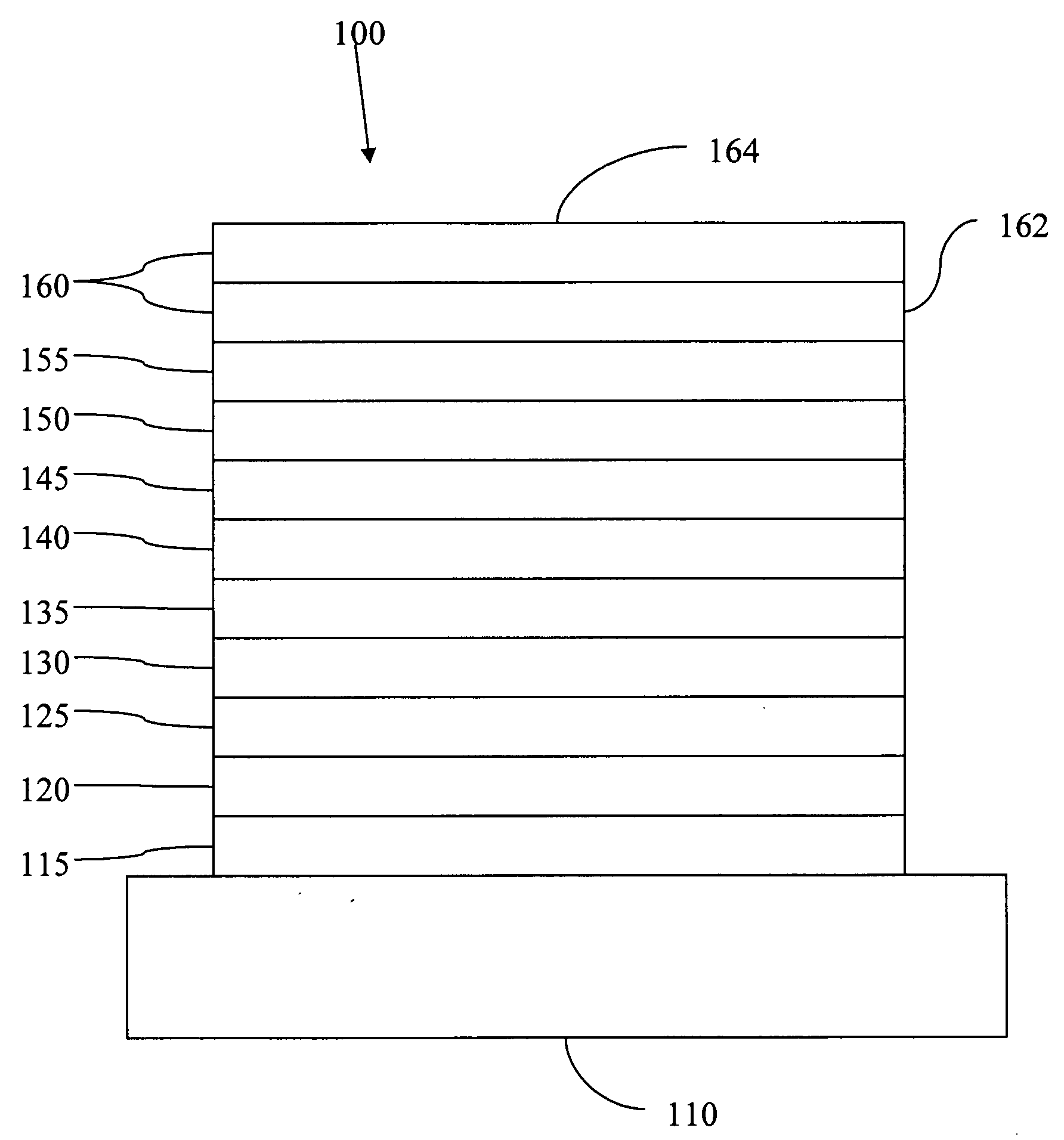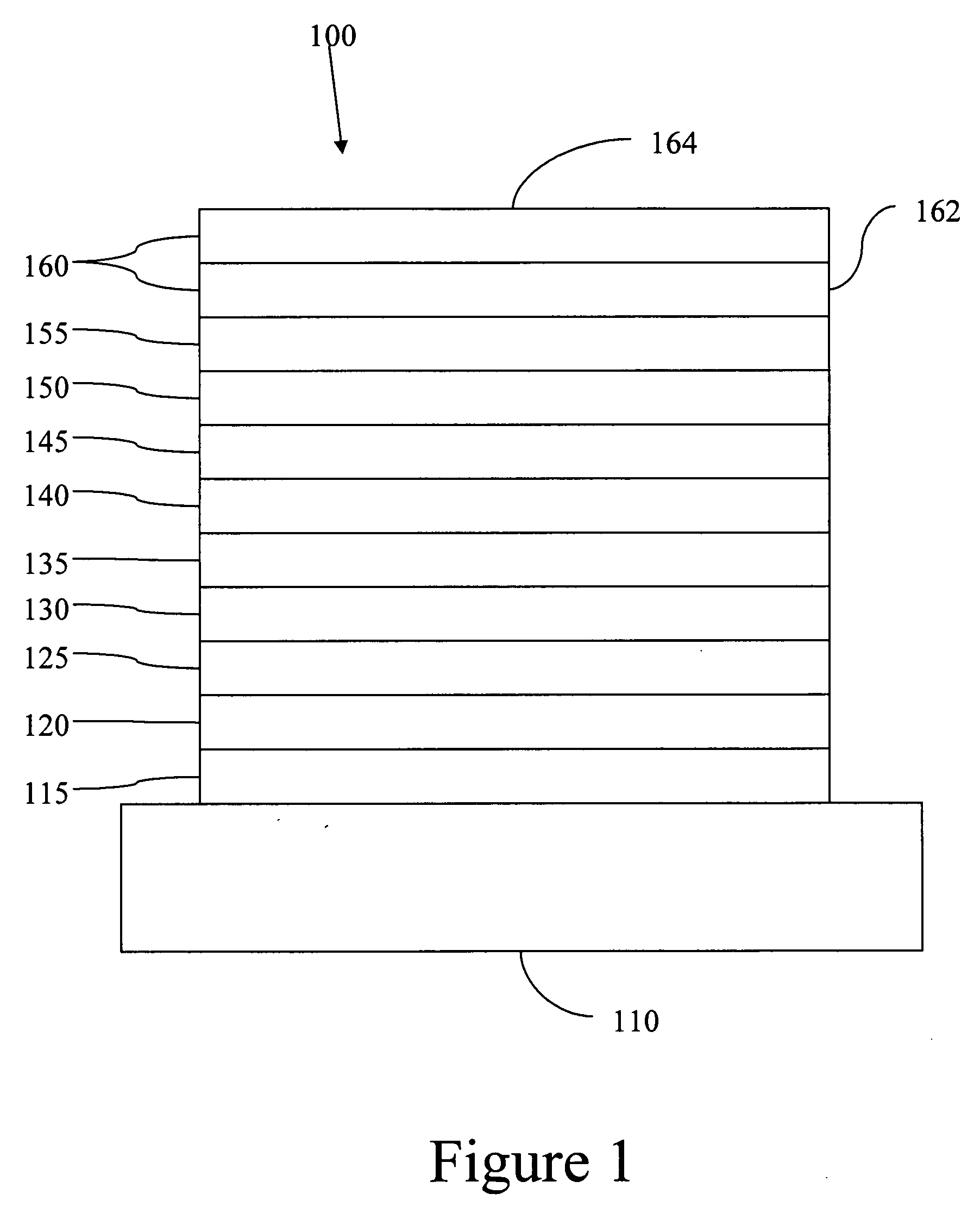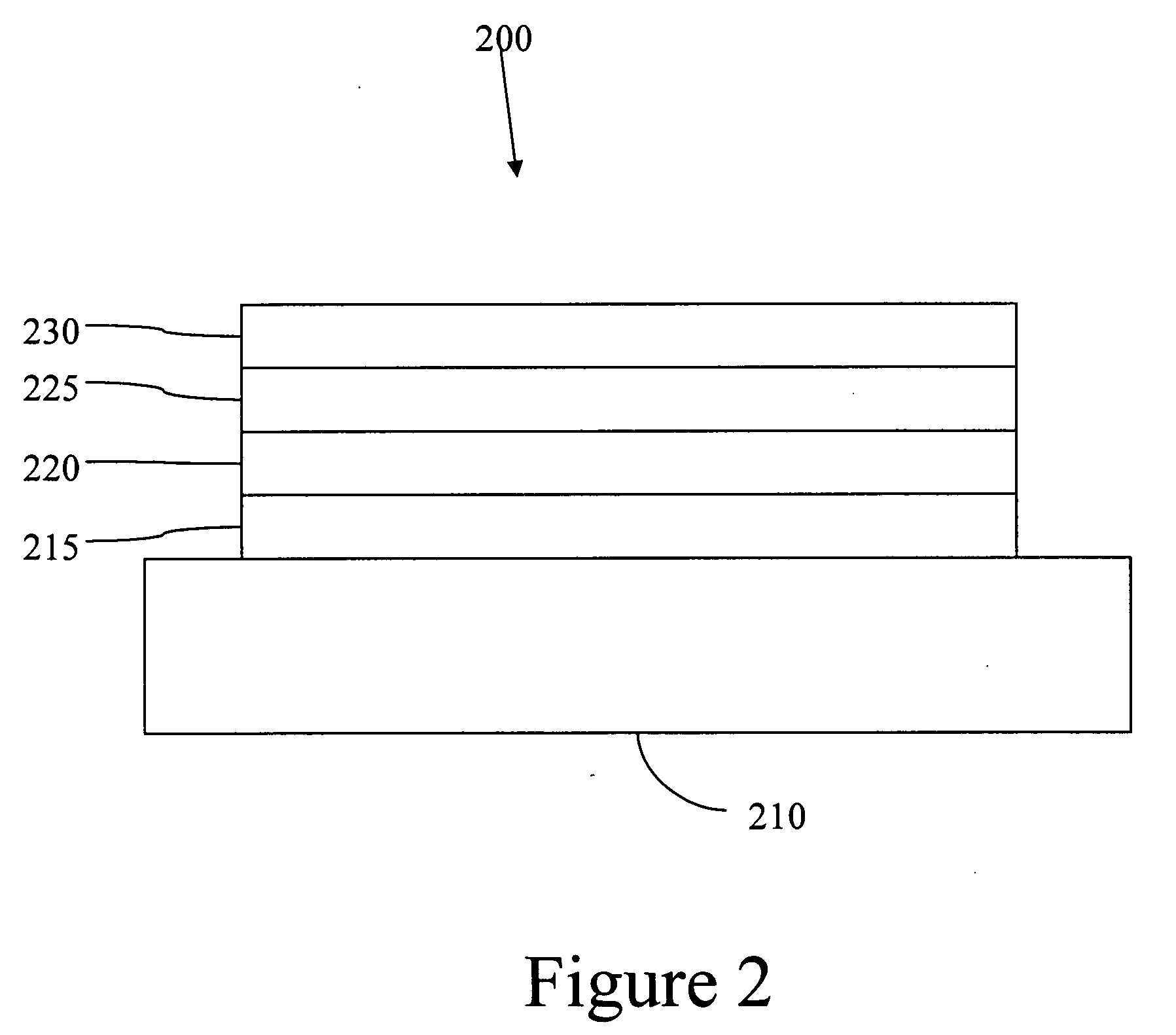Fluorescent filtered electrophosphorescence
a technology of electrophosphorescence and fluorescence, which is applied in the direction of discharge tube/lamp details, discharge tube luminescnet screens, organic semiconductor devices, etc., can solve the problems of limited operation stability and achieve the effects of stable color balance, enhanced stability, and increased drive voltag
- Summary
- Abstract
- Description
- Claims
- Application Information
AI Technical Summary
Benefits of technology
Problems solved by technology
Method used
Image
Examples
example 1
[0102] A device was prepared having the device structure:
ITO / NPD 300 Å / CBP:BCzVBi 5% 90 Å / CBP 40 Å / CBP:PQIr 3% 150 Å / CBP:Irppy 3% 50 Å / / CBP 40 Å / CBP:BCzVBi 5% 110 Å / BCP 320 Å / LiF 8 Å / Al 500 Å
[0103] The principles discussed herein were used to make a WOLED with a maximum external quantum efficiency (ηext) of 9.2% at 1.8 mA / cm2, which is comparable to or higher than reported WOLEDs using all phosphorescent dopants. The excitation voltage of the whole device may be approximately 20% less than the corresponding WOLEDs using a blue phosphorescent dopant and thus the peak total power efficiency is improved to 19.2 lm / W. Blue emission versus green-and-red emission is in the ratio close to the ideal ratio of singlet (25%) to triplet (75%). The resulting highly balanced white light gives a color rendering index of 85. By making the phosphorescent doping layers away from the exciton generation region which has highly concentrated local triplet density, the triplet-triplet annihilation is re...
example 2
[0108] Devices were prepared having the following structures for the emissive region: [0109] I: NPD 300 Å / CBP:BCzVBi (5%,50 Å) / CBP (160 Å) / CBP:BCzVBi (5%,50 Å) / BCP 400 Å[0110] II: NPD 300 Å / CBP:BCzVBi (5%, 250 Å) / BCP 400 Å[0111] III: NPD 300 Å / CBP:BCzVBi (5%, 50 Å) / CBP (50 Å) / CBP:Ir(Ppy)3 (2%, 150 Å) / CBP (50 Å) / CBP:BCzVBi (5%, 50 Å) / BCP 400 Å
[0112] Maximum quantum efficiencies of 2.6%, 2.7%, and 5.2% were measured for device I, II, and III, respectively.
[0113]FIG. 6 shown the emission spectrum of the devices I, II, and III at a current densities of 100 mA / cm2. Comparison of the non-normalized electroluminescence (EL) intensity for these three devices shows that insertion of an extra fluorescent layer in the middle of the emissive region does not give extra fluorescent emission. This confirms that the excitons are mainly generated at NPD / CBP and CBP / BCP interfaces, where charge carriers accumulate. Together with the fact that no CBP emission at short wavelength is observable in eith...
example 3
[0114] Devices were prepared having the following structures for the emissive region:
NPD (300 Å) / CBP (x Å) / CBP:Ir(ppy)3 (5%, 50 Å) / CBP ((2000−x) Å) / BCP (330 Å)
with x=0, 500, 1000, 1500 and 2000 Å for device I, II, III, IV, and V respectively.
FIG. 7 shows the
[0115] The trend of ηext Vs. position x indicates local triplet density is much higher at HTL / EML and EML / ETL interfaces than in the middle region of CBP emission layer, which agrees with the previous discussion about exciton formation zone and triplet diffusion. The comparison of the roll-off effect due to triplet-triplet annihilation by plotting the decreasing slope of ηext per decade of current density for these five devices shows that the roll-off effect is much stronger when the phosphorescent-doped region is adjacent to the exciton generation zone than when the phosphorescent-doped region is 500 Å away from it. This agrees with the reduced roll-off effect of next observed in the devices of the invention compared with ...
PUM
| Property | Measurement | Unit |
|---|---|---|
| Fraction | aaaaa | aaaaa |
| Fraction | aaaaa | aaaaa |
| Fluorescence | aaaaa | aaaaa |
Abstract
Description
Claims
Application Information
 Login to View More
Login to View More - R&D
- Intellectual Property
- Life Sciences
- Materials
- Tech Scout
- Unparalleled Data Quality
- Higher Quality Content
- 60% Fewer Hallucinations
Browse by: Latest US Patents, China's latest patents, Technical Efficacy Thesaurus, Application Domain, Technology Topic, Popular Technical Reports.
© 2025 PatSnap. All rights reserved.Legal|Privacy policy|Modern Slavery Act Transparency Statement|Sitemap|About US| Contact US: help@patsnap.com



